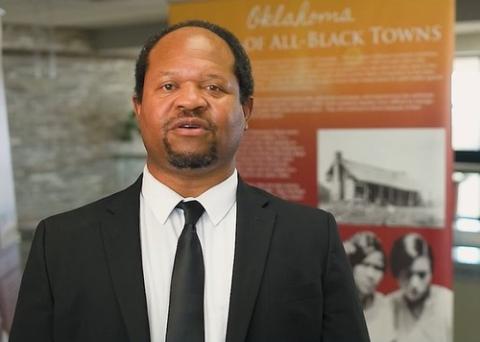Black Towns display visits OSU-OKC

The Oklahoma Historical Society’s “All-Black Towns of Oklahoma” exhibit is making a stop at Oklahoma State University-Oklahoma City for February.
The Black Student Association of OSU-OKC coordinated the presentation of the display with funding from the Disability Services & Diversity Office at OSU-OKC.
The exhibit, made up of 12 retractable banners, tells the story of Black leaders’ desire to make Oklahoma a home for oppressed African-Americans across the United States shortly after the 1889 Land Run opened the Oklahoma Territory for settlement.
Dr. Steven Collins is a professor of political science at OSU-OKC and is the adviser to the Black Student Association.
“After the Oklahoma Land Run of 1889, black leaders saw Oklahoma as a boon,” Collins said. “As a way for black leaders and black people to resettle after the awful horrors and things that affected them in the American South.”
Oklahoma was seen as a land where African-Americans could come for the dream of self-government.
As many as 50 communities arose where African Americans lived and governed themselves. Towns including Langston and Boley thrived in Oklahoma’s early days post-Land Run.
“These panels tell the great and rich history of Black Oklahomans,” Collins said.
Nowhere else, neither in the Deep South nor the Far West, did so many African American men and women come together to create, occupy, and govern their own communities, according to the Oklahoma Historical Society information.
After statehood, the legislature enacted several “Jim Crow” laws, including segregating schools and transport and forbidding interracial marriages. Over time, the Dust Bowl and Great Depression also had an effect, in addition to continued racial discrimination.
From the original 50 identified Black towns, 13 remain today.
